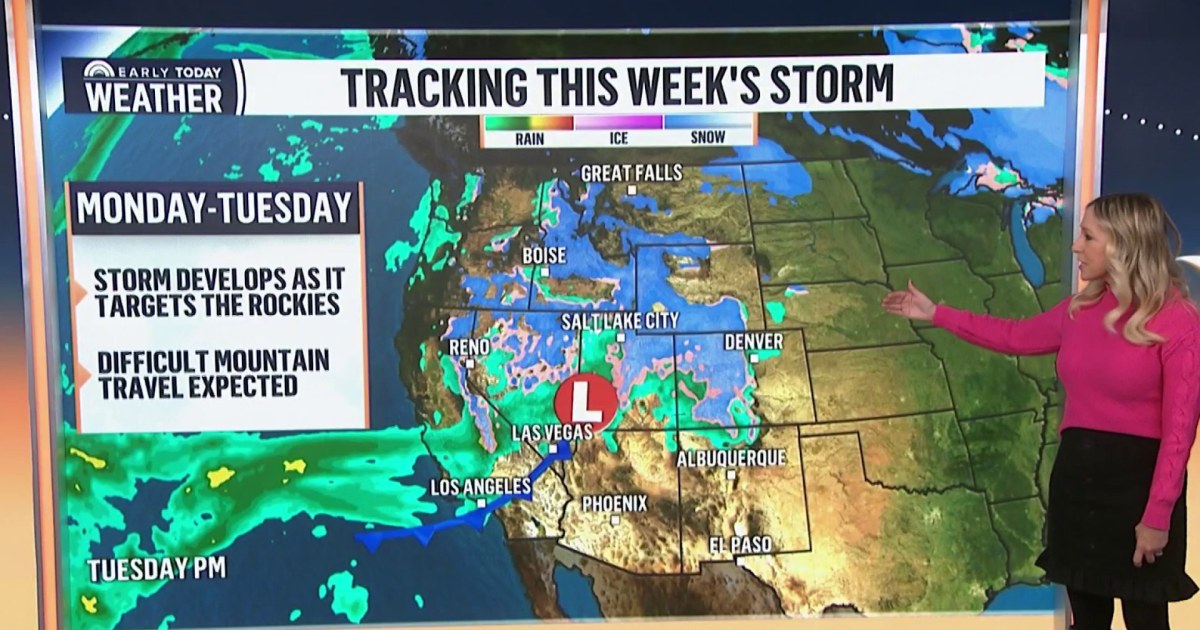Bussiness
Is Streaming Video Finally Good Business For Someone Besides Netflix?

The past five years have seen most of Hollywood’s major media companies all do their Be Like Mike imitation, and launch an owned & operated streaming service to compete with bete noir/major checkbook Netflix.
And it’s also seen those companies streaming services – Disney’s Disney+ and Hulu, Warner Bros. Discovery’s Max, Paramount’s Paramount Plus, and Comcast’s Peacock – rack up record losses collectively totaling something around $15 billion, all while their cash-cow legacy film, broadcast and cable operations have faded, fast.
Things are starting to improve. Disney nudged its streaming services into cash-flow positive last quarter. Max peeked into profitability before falling back into losses. The budget holes formerly known as Peacock and Paramount Plus seem to have substantially, if not totally closed.
So is it time to consider whether streaming could actually be a real business, you know, one that makes money in a sustainable way and replaces at least some of the vast profits that legacy film and TV operations long provided the Hollywood giants? That’s the question analysts at research firm MoffettNathanson take up in a just-released report.
And the answer is, maybe, finally, if you’re big enough.
“It is a streaming world whether we like it or not,” wrote the MoffettNathanson team led by co-founder Michael Nathanson. “The question, however, is whether we old curmudgeons should start liking it.”
It all boils down to scale. Bigger is better when it comes to paying for the gargantuan operating costs of a major modern streaming company, including enough programming to feed the expectations of audiences, the costs of streaming content to tens of millions of users, and marketing to keep those audiences signing up and staying around.
“Streaming’s ravenous appetite for content, technology and development costs mean the way to earn a buck is by monetizing those fixed costs across as wide a base as possible,” the MoffettNathanson team wrote. “And the greater the monetization, the greater the capability to reinvest into content and drive the subscriber and engagement growth flywheel forward.”
Scale, how many subscribers you have, and how much they watch, matters even more now that all the streaming services (except Apple’s prestige pet project Apple TV+) have an ad-supported tier. Ads need viewers to make money, so getting your audiences to watch longer equates directly to profits.
Looming over all of this is Netflix, one of the first subscription streaming services and the first to figure out most of the trenchant questions facing the industry, while growing to 290 million subscribers worldwide. Netflix was late to the ad-supported game, launching a low-cost tier in late 2022, and has been seen slow if steady growth there since. But that’s just super-valuable cherries on the sundae of profits that Netflix and its investors have been dining on the past few years.
“Netflix clearly has achieved the necessary scale from both a subscriber and engagement perspective,” MoffettNathanson wrote. “Even as the company has taken longer to build its advertising business, we still believe its efforts will click, and when it does it should turn its already good business into a great business. Yet, getting there may still take some time.”
Everyone else remains pretty hungry:
- Disney has the second-most subscribers but totals are spread across kid-friendly Disney Plus, the more adult-skewing Hulu and undernourished sports service ESPN Plus, which is still waiting to become a real service next year when it gets all of cable giant ESPN’s vast collection of sports rights. “Its DTC business has turned a corner on profitability, but investors need more confidence in the margin trajectory as well as a narrative that lays out a clear vision for a unified streaming product,” MoffettNathanson wrote. “Plus, how will sports and particularly ESPN Flagship play into those plans?” Indeed, the uncertainty about Disney’s plans, for both its streaming operations and its next CEO, have likely contributed to share prices that continue to scuffle around $93, far below the $120-plus levels of last springs proxy battles with Norman Peltz and other activist investors.
- Max, Peacock, and Paramount Plus are no longer hemorrhaging funds at billion-dollar rates, a relief for investors, but at a price that has seen them dramatically cut investments in original programming. “It is true, they are no longer major drains on their parent companies’ frail balance sheets,” MoffettNathanson wrote. “Even if they start generating a modest profit, how sustainable can it be without ongoing investment? Streaming may prove to be a business where to the winners go the riches, but it still isn’t clear there will be much left over for everyone else.”
The research piece doesn’t dive into the tech giants and their streaming side hobbies – Amazon Prime Video and Apple TV+ – and mostly treats Netflix as a best-case scenario for what’s possible, now that it’s become a sustainable business throwing off billions of dollars in free cash flow.
But even the lesser services are seeing, generally, big incremental increases in revenue and earnings before interest and taxes, even at Paramount Plus, whose parent company is being sold and which has the fewest resources. Its incremental margin is up 115 percent to $700 million in the first half of the year.
Ads have helped everyone, though a glut of ad slots has depressed prices for everyone, even the culprit most to blame for that glut, Amazon Prime, which turned tens of millions of ad-free subscribers into an ad-supported tier overnight back in February.
“All in, we believe Netflix, Paramount+ and Max each make more per user on their ad-tiers today than their ad-free subscribers, while Hulu, Disney+ see the reverse, with Peacock about even,” MoffettNathanson wrote.
Netflix’s ad efforts remain in “relative infancy” nearly two years on, but those efforts will likely drive the company’s next “leg” of revenue, MoffettNathanson wrote.
Certainly, that’s what subscribers are betting on. Shares have been hovering close to $700 lately, and are up 75% in the past year. Morningstar analysts rate the company wildly overvalued, at two stars, with a “fair value” of $500 per share. MoffettNathanson tweaked its out-year Netflix estimates for ad revenues downward 1 percent, while expecting cost cutting to balance some of that out.
“On a total company basis, we are now -8% below consensus for total company revenues by 2027 and -9% below on operating income, with similar expectations for margin expansion going forward,” MoffettNathanson wrote. With the stock at near-record levels already, “how much more room is there for the stock to go from here?”
With that question hovering, the analysts left their price target unchanged, at $570, some $129 below closing prices on Wednesday. They still rate Netflix neutral, the equivalent of a “hold” rating.
MoffettNathanson had harsher words for Disney’s streaming portfolio, calling it “stuck between a mediocre margin profile, and a promised future, full of unknowns and potential.”
Disney’s three services topped 186 million combined subscribers in Q2, though that includes a money-losing Indian unit, HotStar, that it inherited in the Fox acquisition and is now selling to a joint venture with Reliance. Minus HotStar, Disney has 150 million or so subscribers, and about as many as Netflix in the United States-Canada market.
“Yet, Disney has yet to realize the benefits of that scale due to the fragmented nature of its product,” MoffettNathanson wrote. About half of the company’s subscribers see all three services as part of a bundle, which means about half still don’t, undercutting the potential for a better user experience with a single interface, and reducing the lucrative potential of ad-supported programming.
“What we think Disney needs is a unified vision for what it wants its streaming product to look like,” MoffettNathanson wrote. “In committing to buying Comcast’s remaining third of Hulu, Disney has committed to be a general entertainment company competing head-to-head with Netflix. In committing to eventually bringing the entirety of ESPN OTT, Disney has committed to essentially attempting to recreate its portfolio of linear channels through streaming. Disney wants to be the place for premium, non-user-generated content, but it is hard for us right now to envision what exactly that looks like.”
The analysts project Disney Plus will “flip from highly unprofitable in FY 2023 to a being a meaningful contributor of profit by FY 2027#. We also project Hulu to grow its profits steadily from roughly breakeven in FY 2023 to $1.4 billion in FY 2027.” What happens when ESPN+ becomes the full-bodied sports service that is cable-based ESPN is the great “wild card” in the Disney deck.
Stronger margins for Disney Plus and Hulu mean “investors need to have more conviction in this trajectory and understanding the key KPIs along the way to give Disney the credit for these profits in their valuation.”
So, is streaming a good business yet? If you’re Netflix, yes. For Disney, it’s getting there, though still “budding,” with lots of questions. Everyone else faces challenges ever getting to scale without bleeding cash, in part because they’re already leveraged with debt.
“There may be new legs of growth unlocked if the companies lean even further into bundles and JVs. WBD has already moved in this direction with its recent partnership on a Max, Hulu and Disney+ ‘Ultimate’ bundle, and Paramount leadership has discussed exploring a variety of partnerships of varying structures,” MoffettNathanson wrote.
The key for the Other Guys, however, is that streaming may be a good business for only a couple of companies in a winner-takes-most game.
“After the spoils directed to those two platforms, it is hard to see there being much left for the rest,” MoffettNathanson concluded. “Streaming may no longer be an endless money pit for Warner Bros. Discovery and Paramount, but it hard to see their path towards becoming significant profit centers in their own right.”





/cdn.vox-cdn.com/uploads/chorus_asset/file/25080265/111323_PlayStation_Portal_ADiBenedetto_0004.jpg)




